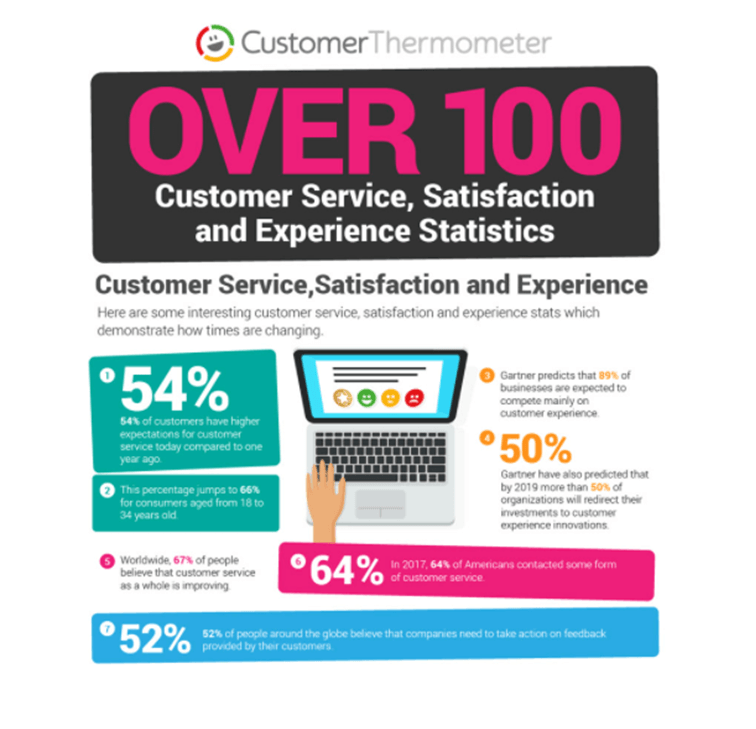Measuring customer satisfaction should be a top priority. The average shopper tells 15 people when they’ve had a bad customer service experience. Whereas, with a 5% boost in client retention rate, a business can ramp up their profits by 25% to 95%.
To really improve your standpoint, you need to know how to measure customer satisfaction the right way. But, acquiring a grasp around customer loyalty and satisfaction is no easy task. It can be hard to be objective when assessing clients’ happiness. Luckily, there are practical methods that can get the job done.
The Impact of Customer Satisfaction
Based on a survey, 52% of global respondents stated that businesses should take action on gathering customer feedback. Not only to improve their products but to build loyalty and better engagement. This is to ensure that the growth of the business is on the right track.

Credit: Customer Thermometer
Learning how to measure customer feedback can provide any company with beneficial implications. In time, clients who gained consecutive positive experiences have better odds of becoming loyal to the brand as a whole.
This is a critical fact, considering that a business would need to spend 6 to 7 times more resources on attracting new clients than keeping the current ones.
6 Methods On How to Measure Customer Satisfaction
Every client will judge a product or a service based on personal taste. They will use emotional (affective) and rational (cognitive) reactions to analyze a product. But, they will also use behavioural intentions, like what are the odds of recommending or repurchasing the product. These are all vital components of what determines customer satisfaction. Take a look at the ways you can measure it.
1. Define All Research Goals
Before you figure out how to measure customer satisfaction, you would need to establish adequate goals. Why do you need this data? What does it have to offer? The methods should be tailored towards the customer’s needs.
Team of young professionals discussion research objectives.

Leave a Comment